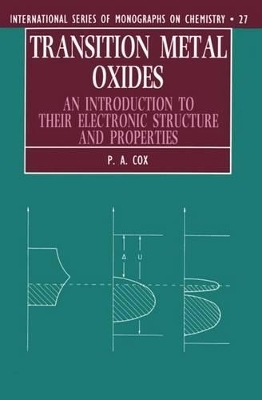
Transition Metal Oxides
An Introduction to their Electronic Structure and Properties
Seiten
1995
Clarendon Press (Verlag)
978-0-19-855925-2 (ISBN)
Clarendon Press (Verlag)
978-0-19-855925-2 (ISBN)
Transition metal oxides form a series of compounds with a wide range of electronic properties. The aim of this text is to describe the varied electronic behaviour shown by transition metal oxides, and to discuss the different types of theoretical models proposed to interpret this behaviour.
Transition metal oxides form a series of compounds with a uniquely wide range of electronic properties. They have important applications as dielectrics,semiconductors, and metals, and as materials for magnetic and optical uses. The recent discovery of `high temperature' superconductors has brought the attention of a wide scientific community to this area and has highlighted the problems involved in trying to understand transition metal oxides. The present book is not primarily about Tc superconductors, although their main properties are discussed in the final sections. The main aim is to describe the varied electronic behaviour shown by transition metal oxides, and to discuss the different types of theoretical model that have been proposed to interpret it. It is intended to provide an introduction to this fascinating and difficult field, at a level suitable for graduate students and other research workers with a background in solid- state chemistry or physics.
Transition metal oxides form a series of compounds with a uniquely wide range of electronic properties. They have important applications as dielectrics,semiconductors, and metals, and as materials for magnetic and optical uses. The recent discovery of `high temperature' superconductors has brought the attention of a wide scientific community to this area and has highlighted the problems involved in trying to understand transition metal oxides. The present book is not primarily about Tc superconductors, although their main properties are discussed in the final sections. The main aim is to describe the varied electronic behaviour shown by transition metal oxides, and to discuss the different types of theoretical model that have been proposed to interpret it. It is intended to provide an introduction to this fascinating and difficult field, at a level suitable for graduate students and other research workers with a background in solid- state chemistry or physics.
Introduction: Scope and plan of the book; Chemical aspects; Structural principles; Electronic classification; Models of electronic stucture: Ionic models; Cluster models; Band theory; Intermediate models; Insulating oxides: do compounds; Other closed-shell oxides; Transition metal impurities; Magnetic insulators; Defects and semiconduction: Electronic carrier properties; The point-defect model; Carrier binding energies and spectroscopy; Transition to the metallic state; Metallic oxides: Simple metals; Electron correlation and magnetic anomalies; Lattice interactions; Superconductivity; Index.
| Reihe/Serie | International Series of Monographs on Chemistry ; 27 |
|---|---|
| Zusatzinfo | line figures, tables |
| Verlagsort | Oxford |
| Sprache | englisch |
| Maße | 158 x 236 mm |
| Gewicht | 464 g |
| Themenwelt | Naturwissenschaften ► Chemie ► Anorganische Chemie |
| Naturwissenschaften ► Chemie ► Organische Chemie | |
| Naturwissenschaften ► Chemie ► Physikalische Chemie | |
| Naturwissenschaften ► Physik / Astronomie ► Festkörperphysik | |
| Technik ► Elektrotechnik / Energietechnik | |
| Technik ► Maschinenbau | |
| ISBN-10 | 0-19-855925-9 / 0198559259 |
| ISBN-13 | 978-0-19-855925-2 / 9780198559252 |
| Zustand | Neuware |
| Haben Sie eine Frage zum Produkt? |
Mehr entdecken
aus dem Bereich
aus dem Bereich
Buch | Hardcover (2024)
Springer Spektrum (Verlag)
64,99 €


